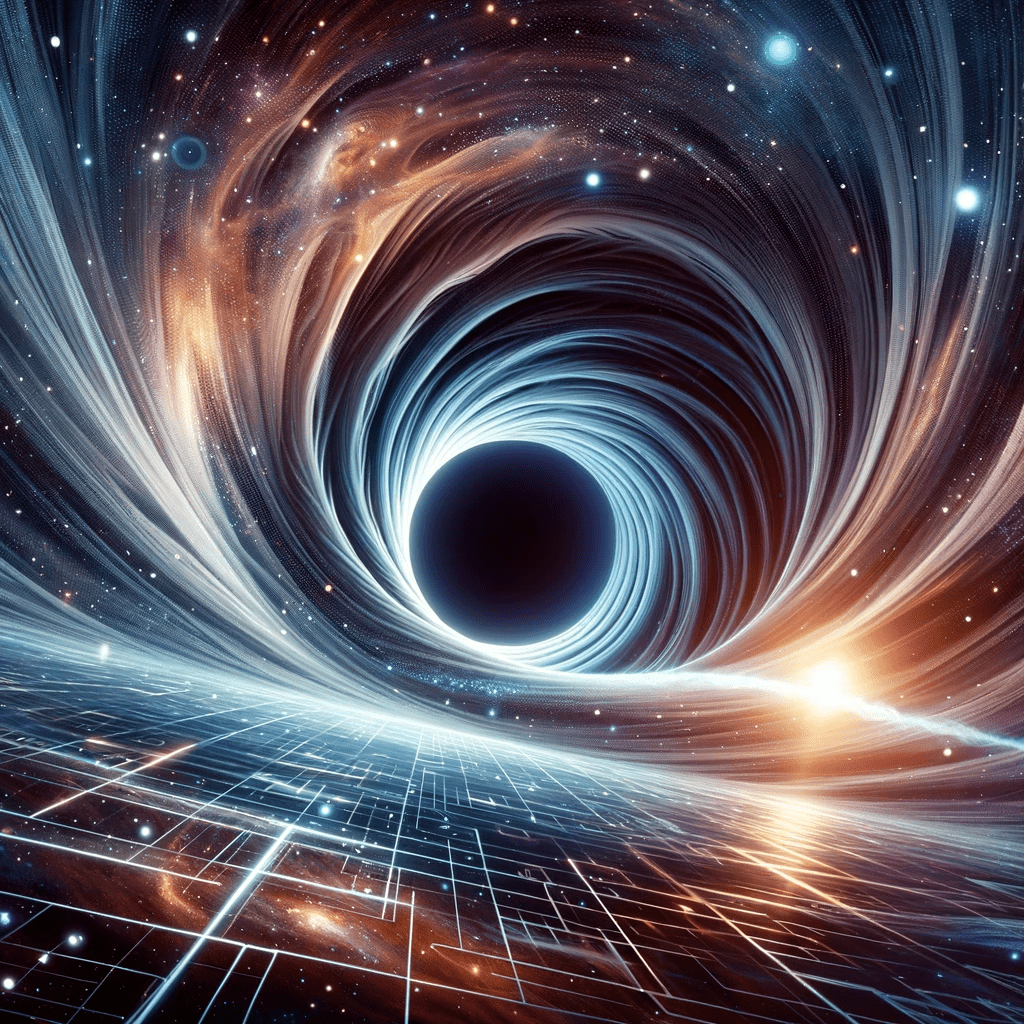Portals and Wormholes

Portals and wormholes connecting different dimensions or realities have captivated the human imagination for decades. While these concepts are rooted in theoretical physics, they have also permeated popular culture, inspiring countless works of fiction, films, and TV series. To explore this idea, let’s examine the scientific underpinnings of portals and wormholes and how they might relate to different dimensions or realities.
Wormholes, also known as Einstein-Rosen bridges, are hypothetical constructs based on the general theory of relativity. In essence, they are “shortcuts” through spacetime, connecting distant points in our universe. While wormholes typically involve connections within our universe, some theoretical physicists propose that they could also link to other dimensions or realities.
The Einstein-Rosen bridge
The Einstein-Rosen bridge, commonly known as a wormhole, is a theoretical construct in the field of general relativity, which describes the fundamental force of gravity. The term “Einstein-Rosen bridge” derives from the names of physicists Albert Einstein and Nathan Rosen, who first proposed the concept in a 1935 paper.
In simple terms, an Einstein-Rosen bridge is a “shortcut” or “tunnel” through spacetime, connecting two distant points in the universe. It is a solution to the Einstein field equations, which describe the relationship between the geometry of spacetime and the distribution of mass and energy within it. The idea of a wormhole is based on the notion that spacetime can be curved and stretched, allowing two otherwise distant points to be connected through a tunnel-like structure.
The Einstein-Rosen bridge, or wormhole, is a solution to the Einstein field equations, found by analyzing the properties of a particular type of spacetime metric called the Schwarzschild metric. The Schwarzschild metric describes the spacetime geometry around a spherically symmetric, non-rotating mass (such as a non-rotating black hole or a star). In the context of the Schwarzschild metric, a wormhole arises as a tunnel-like structure connecting two distinct asymptotically flat regions of spacetime.
Mathematically, the Schwarzschild metric is given by:
ds^2 = -(1 – 2GM/c^2r) dt^2 + (1 – 2GM/c^2r)^(-1) dr^2 + r^2(dθ^2 + sin^2θ dφ^2)
where ds^2 is the spacetime interval, G is the gravitational constant, M is the mass of the object, c is the speed of light, and (t, r, θ, φ) are the Schwarzschild coordinates.
The Einstein-Rosen bridge emerges as a mathematical possibility in the Schwarzschild metric when r = 2GM/c^2, known as the Schwarzschild radius or the event horizon of a black hole. In this case, the term (1 – 2GM/c^2r) vanishes, leading to a singularity in the metric. However, if we analytically continue the solution through this singular point, we obtain two distinct copies of the Schwarzschild solution, connected by a “bridge” or “throat” that corresponds to the wormhole.
Two primary theories that support this idea are string theory and the multiverse theory.
String theory posits that the fundamental building blocks of our universe are tiny, vibrating strings rather than particles. This theory suggests the existence of extra dimensions beyond the familiar three spatial dimensions and one temporal dimension. The extra dimensions are thought to be compactified, or “hidden,” at incredibly small scales. In this framework, a wormhole or portal might connect different dimensions by linking these compactified spaces. Notable physicists, such as Brian Greene, have explored the implications of string theory extensively. Greene’s book “The Elegant Universe” (1999) looks into the topic, discussing the potential for extra dimensions and how they might be connected.
Multiverse theory, another popular concept in theoretical physics, proposes the existence of multiple universes or “parallel realities,” each with its own set of physical laws and constants. These parallel universes could exist within a larger “meta-universe” or “multiverse.” A wormhole or portal connecting different realities within the multiverse might be possible if it could bridge the spacetime fabric of each universe, allowing for travel or communication between them. Physicist Max Tegmark has written about the multiverse in his book “Our Mathematical Universe” (2014), explaining various types of multiverses and exploring the potential for connections between them.
For instance, theoretical physicist Kip Thorne explored the possibility of using wormholes for time travel in a 1988 paper co-authored with Michael Morris and Ulvi Yurtsever. Although their research did not specifically focus on connections to other dimensions, it contributed to the broader conversation about the potential applications of wormholes.
A 2014 article in The Guardian explored the possibility of a multiverse and the role wormholes might play in connecting parallel universes. The idea of portals or wormholes connecting different dimensions or realities is an exciting and thought-provoking topic in both theoretical physics and popular culture. While scientific theories like string theory and the multiverse theory offer potential frameworks for these connections, experimental verification remains elusive.
In 1988, theoretical physicist Kip Thorne, along with Michael Morris and Ulvi Yurtsever, explored the possibility of using wormholes for time travel in their paper “Wormholes, Time Machines, and the Weak Energy Condition” published in the journal Physical Review Letters. While not specifically focused on connections to other dimensions, their work contributed to the broader conversation about the potential applications of wormholes.
Source: Morris, M. S., Thorne, K. S., & Yurtsever, U. (1988). Wormholes, Time Machines, and the Weak Energy Condition. Physical Review Letters, 61(13), 1446-1449.
Physicist Brian Greene’s book “The Elegant Universe: Superstrings, Hidden Dimensions, and the Quest for the Ultimate Theory” (1999) discusses the implications of string theory, including the potential for extra dimensions and the possibility of connecting them through wormholes or portals.
Max Tegmark’s book “Our Mathematical Universe: My Quest for the Ultimate Nature of Reality” (2014) provides an in-depth exploration of the multiverse theory, discussing various types of multiverses and the potential for connections between parallel universes.
